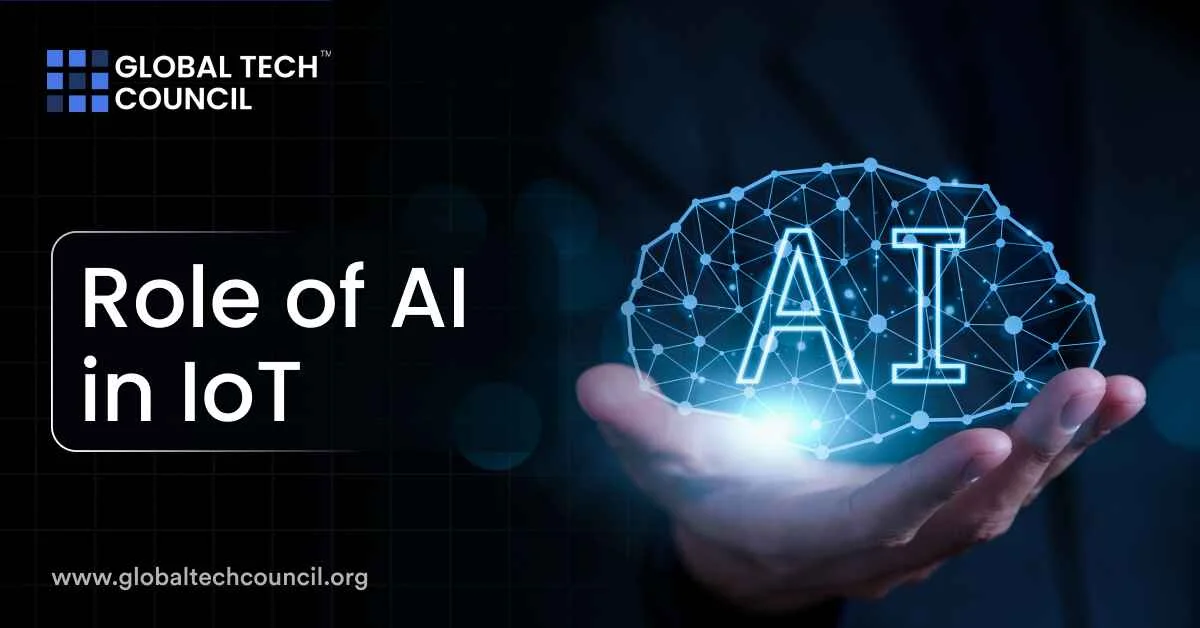Introduction
In the digital age, acronyms like AI (Artificial Intelligence) and IoT (Internet of Things) are ubiquitous, transforming the way we interact with technology. The real magic happens when AI and IoT intersect. This union unlocks new dimensions of efficiency, insight, and convenience. AI imbues IoT devices with intelligence, enabling them to make sense of the data they collect. Think of your smart home security system using AI to distinguish between your family members and potential intruders, or factories optimizing production by predicting machine maintenance needs.
AI or The Intelligent Brain
Artificial Intelligence, or AI, is the culmination of computer science and advanced mathematics. It empowers machines to mimic human-like cognitive functions, such as learning, reasoning, and problem-solving. AI encompasses various technologies, including machine learning, deep learning, and natural language processing, enabling it to adapt and evolve.
The Connective Nervous System of IoT
On the other hand, the Internet of Things, or IoT, represents a sprawling network of interconnected devices and objects. These objects can range from everyday items like thermostats and refrigerators to sophisticated industrial sensors. IoT devices collect and exchange data, creating a digital tapestry that weaves through our lives.
The Connective Nervous System
On the other hand, the Internet of Things, or IoT, represents a sprawling network of interconnected devices and objects. These objects can range from everyday items like thermostats and refrigerators to sophisticated industrial sensors. IoT devices collect and exchange data, creating a digital tapestry that weaves through our lives.
Enhancing Human Lives
The marriage of AI and IoT is not just about gadgets and factories; it has a profound impact on our daily lives. AI-powered healthcare devices can monitor patients’ vital signs in real-time, sending alerts when intervention is needed. Cities employ smart traffic management systems that ease congestion and reduce emissions. Farmers use AI-driven sensors to optimize crop yields while conserving resources. The possibilities are limitless.
The Rise of IoT: A Brief Overview
- The integration of AI with IoT is often described as a match made in technology heaven. AI imparts intelligence to IoT systems, making them smarter and more efficient. This partnership is driven by the need to process the colossal amounts of data generated by IoT devices.
- IoT devices continuously gather data, but without AI, this data may remain underutilized. AI algorithms can sift through the data in real-time, identifying patterns, anomalies, and trends. For instance, in agriculture, IoT sensors can collect data on soil conditions, weather, and crop health.
- The healthcare sector is a prime example of AI’s transformative role in IoT. Wearable devices and health sensors collect real-time patient data, which AI can analyze to provide doctors with early warnings of health issues. This ensures timely intervention, enhancing patient care and reducing hospitalization rates.
- AI can optimize energy consumption in buildings through IoT-connected systems. By analyzing data from sensors and adjusting lighting, heating, and cooling in real-time, energy costs are reduced while maintaining comfort.
- AI can optimize energy consumption in buildings through IoT-connected systems. By analyzing data from sensors and adjusting lighting, heating, and cooling in real-time, energy costs are reduced while maintaining comfort.
- AI’s role in IoT is particularly prominent in the realm of autonomous vehicles. IoT sensors and cameras provide real-time data to AI systems, enabling vehicles to make split-second decisions, enhancing safety on the road.
Understanding IoT Infrastructure
Sensors and Data Collection
IoT begins with sensors, acting as the eyes and ears of the network. These sensors collect data from the environment, turning real-world phenomena into digital signals. AI plays a crucial role by enhancing the precision and relevance of data collected.
These sensors can monitor everything from temperature and humidity to motion and light. With AI, they can discern patterns, detect anomalies, and predict future trends.
Moreover, AI can make sense of noisy, unstructured data streams. Natural language processing (NLP) techniques, for example, can turn text and voice data into structured insights. This opens up new avenues for data collection and interpretation.
Communication Protocols
Once data is collected, it needs to be transmitted to central hubs or cloud servers. IoT relies on various communication protocols like Wi-Fi, Bluetooth, Zigbee, and cellular networks. AI enhances this process by optimizing data transmission and reception.
Machine learning algorithms can allocate network resources more efficiently. For instance, they can prioritize critical data packets over less important ones, ensuring the timely delivery of crucial information.
AI also contributes to the security of IoT communications. It can identify and thwart cyber threats in real-time, safeguarding the data as it travels through the network.
Data Storage and Processing
The vast amount of data generated by IoT devices must be stored and processed effectively. Traditional methods fall short in managing this data deluge. AI is the key to unlocking valuable insights from this data.
AI-driven analytics engines can process data in real-time, extracting actionable information. This enables quicker decision-making and response. For instance, in a smart city, AI can analyze traffic patterns and optimize signal timings to reduce congestion.
Moreover, AI can predict maintenance needs by analyzing sensor data. In industrial IoT, this predictive maintenance can save significant costs and reduce downtime.
Role of AI in Data Analysis
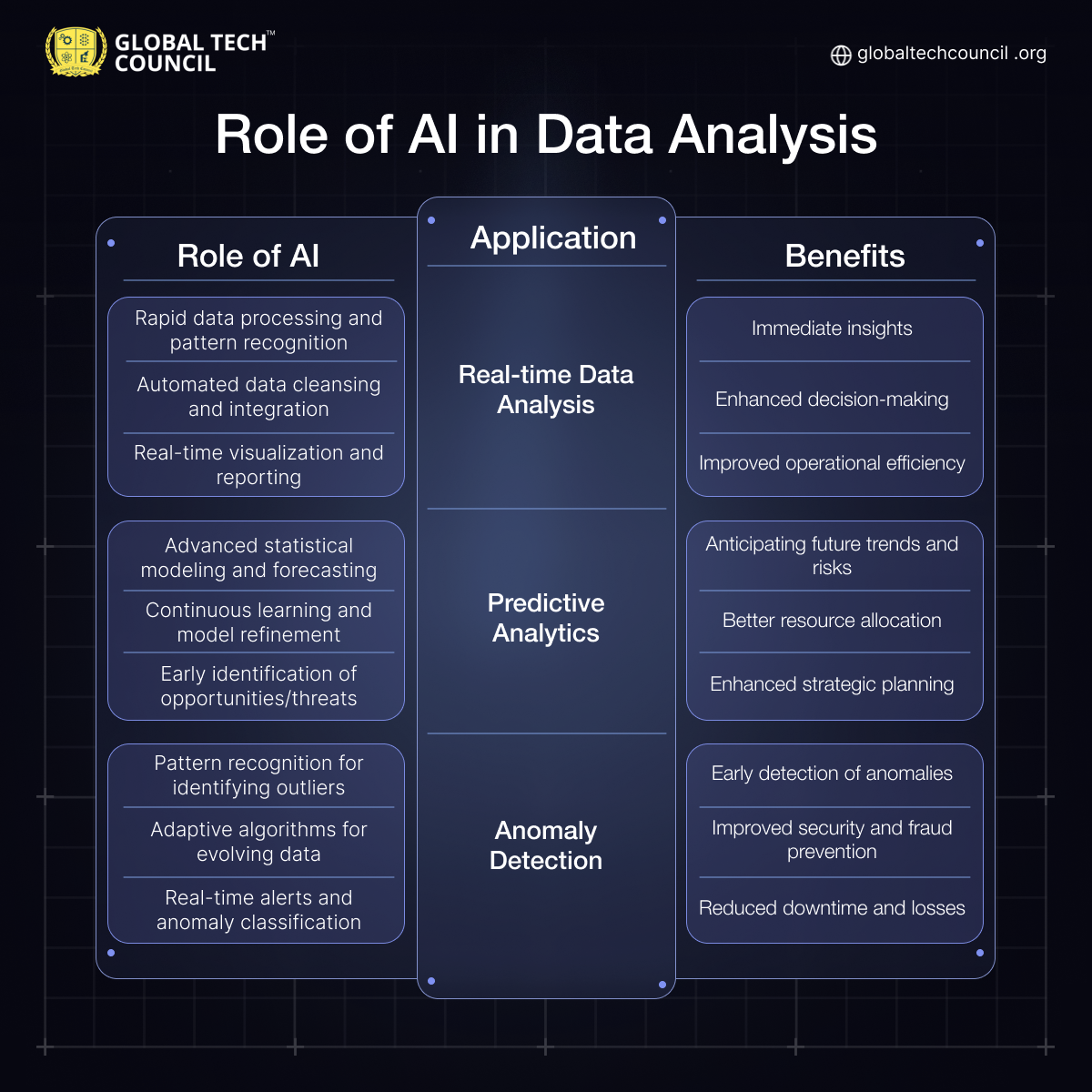
AI for Enhanced Connectivity
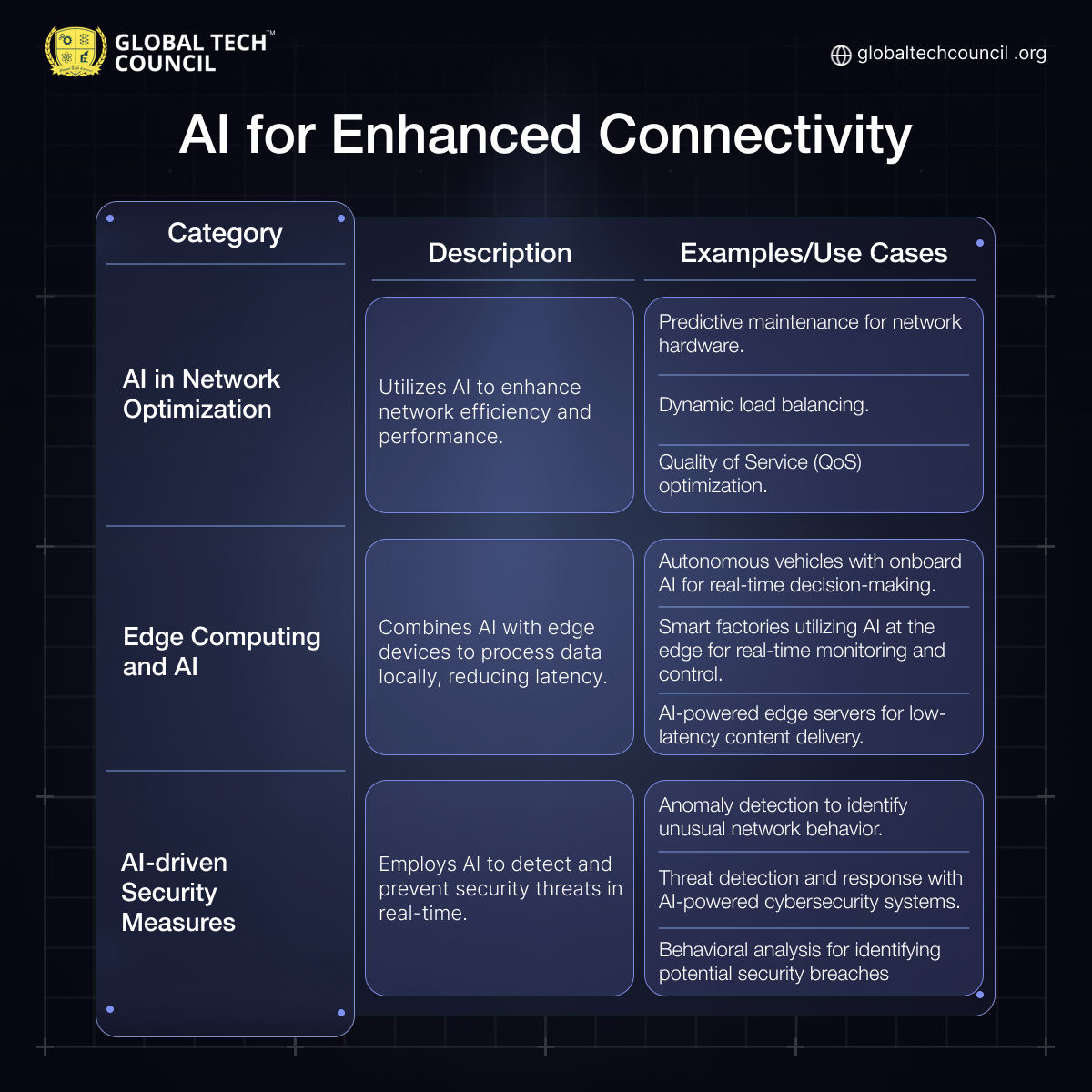
- AI’s role in network optimization is pivotal. It analyzes data patterns for efficient data transfer. Through machine learning, AI can predict network traffic, reducing congestion and latency. AI helps in auto-scaling networks, ensuring consistent connectivity in dynamically changing environments. It optimizes device-to-device communication, making IoT devices work seamlessly together.
- Edge computing combined with AI brings processing closer to IoT devices. This reduces latency and bandwidth consumption for faster data analysis. AI at the edge can make real-time decisions for critical IoT applications. It empowers devices to operate efficiently without relying solely on cloud resources. Edge AI facilitates better decision-making and enhances IoT device autonomy.
AI’s Contribution to Energy Efficiency
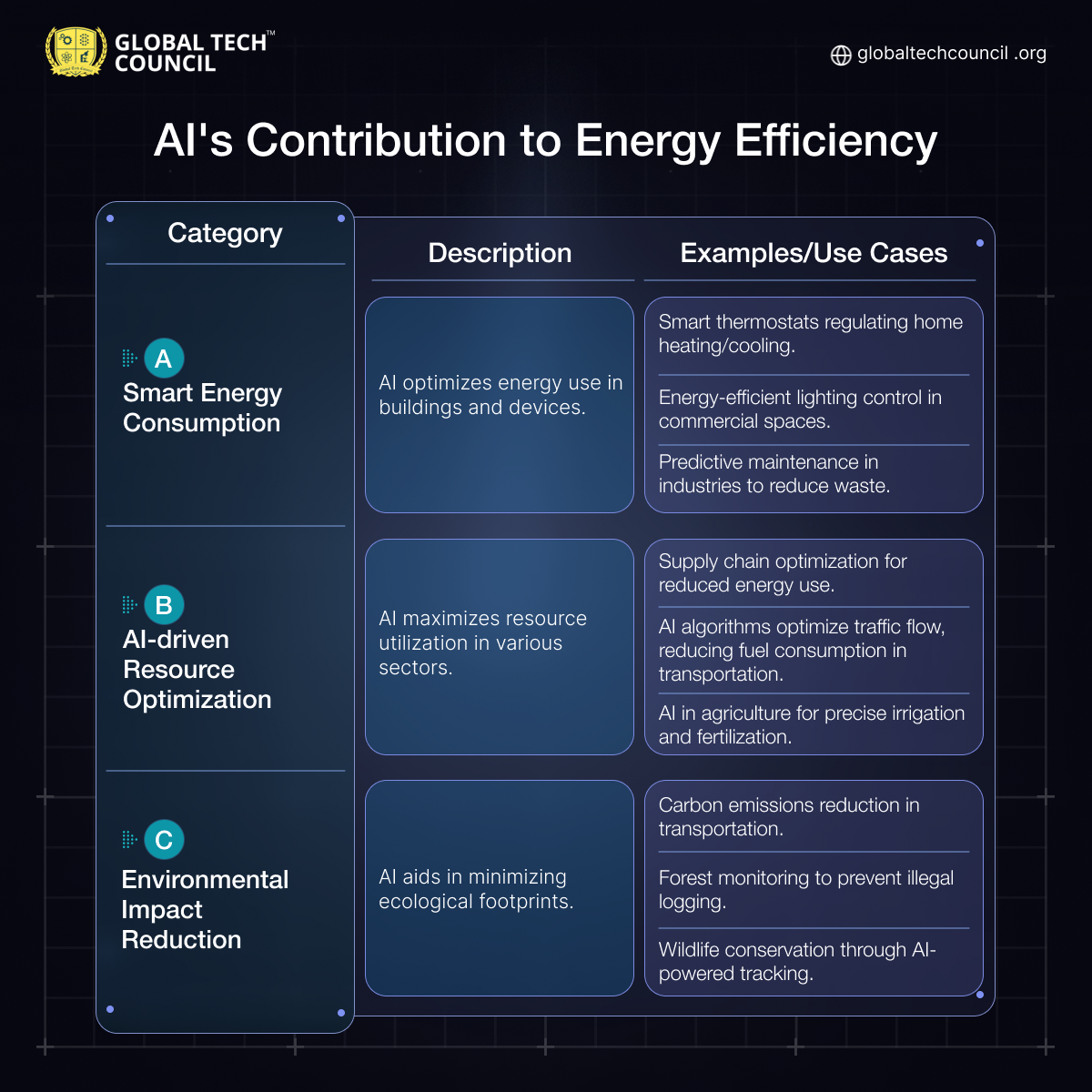
- IoT devices, equipped with AI algorithms, can gather real-time data from various sources, such as sensors and meters. This data is then analyzed to make informed decisions about energy consumption. For example, in a smart home, AI can optimize lighting, heating, and cooling based on occupancy.
- AI-driven resource optimization is another vital aspect of AI’s role in energy efficiency within IoT. By analyzing data from IoT sensors and devices, AI can predict when equipment or machinery is likely to fail and schedule maintenance preemptively. This predictive maintenance not only extends the lifespan of equipment but also reduces energy waste associated with sudden breakdowns.
- AI’s role in IoT extends beyond individual energy savings to making a substantial impact on the environment. By optimizing energy consumption, AI-driven IoT systems reduce the overall carbon footprint. Smart grids, for example, use AI to balance energy supply and demand efficiently. It incorporates renewable energy sources and reduces the reliance on fossil fuels. This leads to a decrease in greenhouse gas emissions and makes our cities more eco-friendly.
AI in Healthcare and Wearables
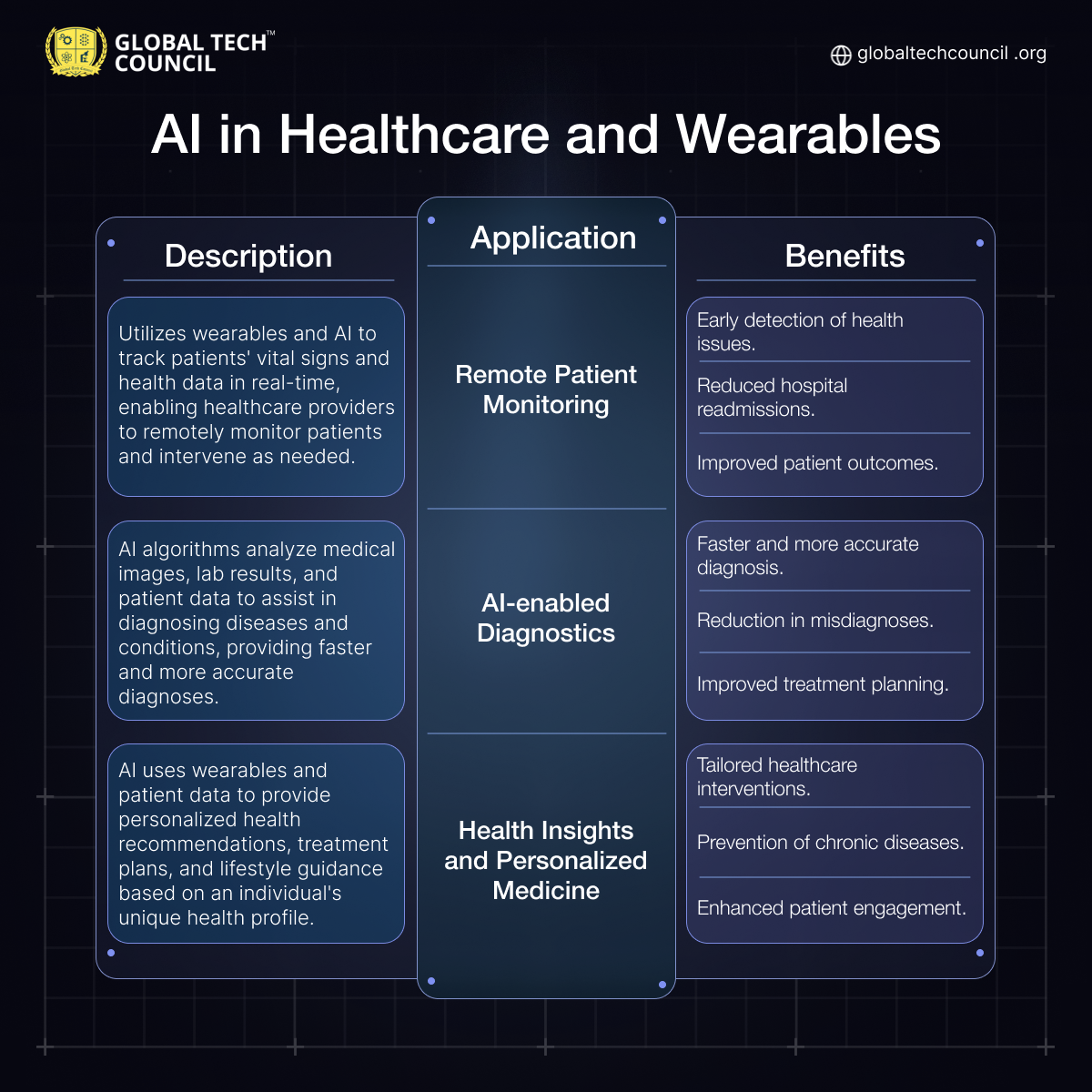
Wearable devices that continuously track a person’s ECG. When coupled with AI, these wearables can detect irregular heart rhythms or signs of a potential heart attack. Similarly, smart devices can monitor glucose levels and provide real-time feedback to diabetics, helping them manage their condition more effectively.
The role of AI in IoT within the healthcare and wearables sector is transformative. It empowers healthcare professionals with real-time data, facilitates accurate diagnoses, and supports the move towards personalized medicine.
Collaboration and Partnerships
Industry Collaborations
The marriage of AI and IoT is prominently observed through industry collaborations. This partnership extends to various sectors, from healthcare to transportation. For instance, in healthcare, AI and IoT together enable remote patient monitoring. Medical devices equipped with IoT sensors collect real-time data, which is then analyzed by AI algorithms. Furthermore, in the automotive industry, collaboration between AI and IoT allows for autonomous vehicles. IoT sensors in self-driving cars collect data about the vehicle’s surroundings, while AI processes this information to make real-time driving decisions.
Academia and Research Contributions
Educational institutions and research centers are actively contributing to the development of AI-driven IoT technologies. They are at the forefront of innovation, conducting experiments, and pushing the boundaries of what’s possible.
Researchers are developing AI algorithms that can analyze and interpret vast amounts of data generated by IoT devices. These algorithms can uncover hidden patterns, predict future events, and provide valuable insights in fields such as environmental monitoring and agriculture.
In agriculture, for instance, IoT sensors gather data on soil conditions, weather, and crop health. AI models process this data to optimize irrigation, pest control, and crop harvesting, resulting in increased yields and reduced resource consumption.
Open Source Initiatives
Open source initiatives are a vital component of the AI-IoT ecosystem. They provide a platform for collaboration and knowledge sharing among developers, researchers, and enthusiasts. These initiatives offer tools, libraries, and frameworks that simplify the integration of AI and IoT technologies. For instance, open source platforms like TensorFlow and OpenAI’s GPT have enabled developers to build AI models that can be easily incorporated into IoT devices.
Open source also promotes innovation in IoT security. With the growing number of connected devices, security is a paramount concern. Open source projects focused on IoT security have emerged to address vulnerabilities and enhance the resilience of interconnected systems.
Conclusion
The convergence of AI and IoT heralds a promising era of technological synergy. These two disruptive technologies are combining forces to reshape the landscape of our world. In this article, we’ve explored the intricate relationship between AI and IoT, delving into the symbiotic benefits they offer to one another. As we look ahead, it’s evident that this partnership has the potential to revolutionize industries across the spectrum. The proliferation of smart homes, cities, and industries stands as a testament to this partnership’s disruptive potential. Moreover, AI’s cognitive abilities enable devices to adapt and learn from their surroundings.
Innovation is the cornerstone of progress, and AI’s integration into IoT is catalyzing a wave of fresh ideas. Entrepreneurs and developers are fervently exploring ways to harness this potent synergy. AI’s role in IoT is pushing the boundaries of automation, enabling businesses to operate more efficiently and cost-effectively. Startups are capitalizing on the power of AI-driven analytics for predictive maintenance, reducing downtime and saving resources. As IoT devices proliferate, we’ll witness improved energy management, enhanced security, and seamless connectivity. Embracing AI and IoT integration encourages innovation in ways we are only beginning to comprehend. The dynamic interplay between these technologies is a driving force propelling us into an exciting and uncharted future.
Frequently Asked Questions
- How is AI used in IoT?
- AI enhances IoT devices by providing intelligence for data analysis and decision-making.
- AI algorithms process data from sensors, identifying patterns, anomalies, and trends in real-time.
- It enables predictive analytics, allowing systems to anticipate future events based on historical data.
- What is AI in smart devices?
- AI in smart devices refers to the integration of artificial intelligence into everyday objects connected to the Internet of Things (IoT).
- Smart devices use AI to mimic human-like cognitive functions, such as learning and adapting to user preferences.
- Examples include smart home security systems using AI to distinguish between family members and potential intruders.
- What is an example of AI in IoT?
- In agriculture, AI-driven IoT sensors collect data on soil conditions, weather, and crop health.
- AI processes this data to optimize irrigation, pest control, and crop harvesting, resulting in increased yields and reduced resource consumption.
- Another example is AI in healthcare, where wearables track vital signs in real-time, providing early warnings for health issues.
- What are the advantages of AI in IoT?
- Real-time Data Analysis: AI enables rapid data processing, immediate insights, and automated data cleansing.
- Predictive Analytics: Advanced statistical modeling anticipates future trends, enabling better resource allocation and strategic planning.
- Anomaly Detection: AI recognizes outliers, ensuring improved security, fraud prevention, and reduced downtime.
- Enhanced Connectivity: AI optimizes network efficiency, facilitates edge computing for faster data analysis, and enhances security measures.
- Energy Efficiency: AI-driven IoT systems optimize energy consumption, maximize resource utilization, and contribute to environmental impact reduction.
- Healthcare and Wearables: AI in IoT transforms healthcare with remote patient monitoring, diagnostics, and personalized health recommendations.
